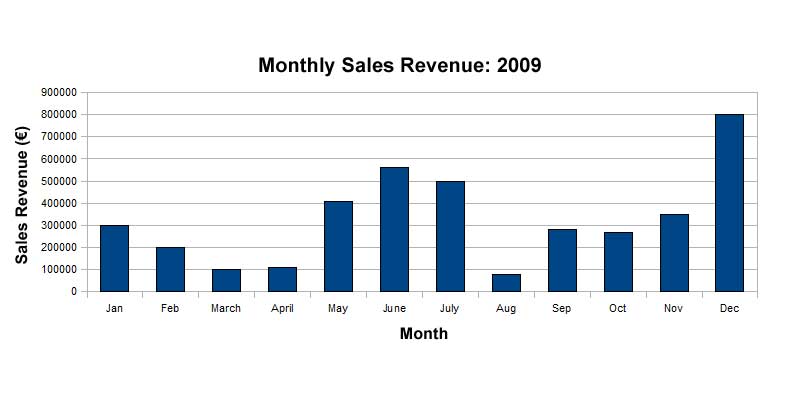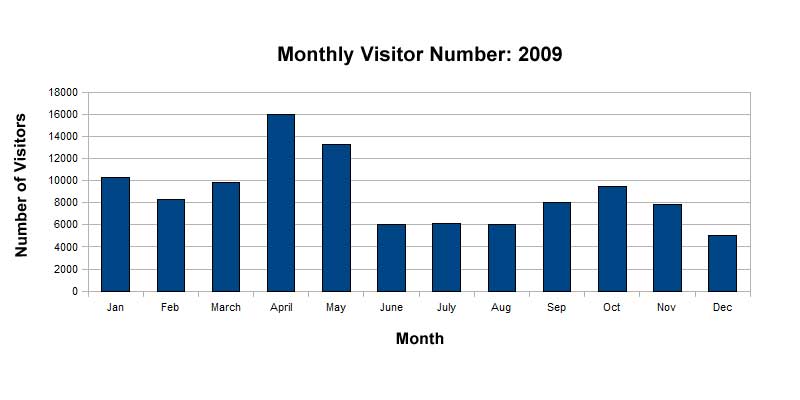
Sales Director:'So now we're going to look at the annual sales figures for last year. As you can see from the chart, in January sales revenue was €300,000. In Febuary it fell by €100,000 to €200,000. By March there was another decline of €100,000, which is normal for that time of year. But things started to improve and by April it edged up by €10,000. And in May there was a jump of €300,000 to €410,000. A good month.
By June, it went up to €560,000. As we know summer is a slow time for us. So, in July there was a drop of €60,000. But in August it plummeted by €420,000 to €80,000. By September there was an improvement, with a climb of €200,000. It then dipped by €10,000 in October, but then there was a rise to €350,000 in November. But in December, I'm pleased to say that sales revenue rocketed to €800,000, an increase of €450,000. Overall, I think we've had a good year.'



